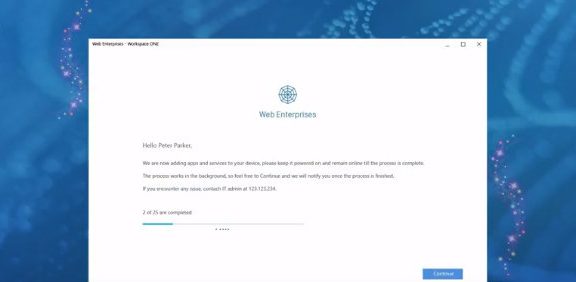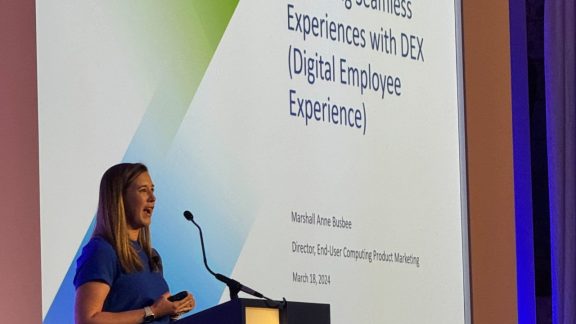Of all the day-to-day tasks of IT administrators, the process of imaging and configuring PCs has been one of the most time intensive and mundane. Historically, companies either dedicated internal resources or paid third-party companies to handle this process, which resulted in long delays for the average user to receive a first-time or replacement laptop or desktop. Contrast that with the experience we all get when we order and receive a new Apple or Android device: Just power on the device; enter your credentials and all of the settings, applications, files and more are delivered over the air in minutes.
 Several years ago, Microsoft made it possible for organizations to have a similar onboarding process for PCs running Windows 10 called the Out-of-Box Experience (OOBE), which required customers to have Azure Active Directory Premium to be enrolled in mobile device management (MDM). Working closely with the Microsoft engineering team and strategic customers, VMware announced integration with Azure Active Directory back in 2015, which enabled the OOBE for organizations leveraging VMware AirWatch for management of their Windows 10 endpoints. Devices could be delivered directly to users who went through a simple onboarding flow without the need for IT to physically touch the device. The response from customers embracing this model was phenomenal.
Several years ago, Microsoft made it possible for organizations to have a similar onboarding process for PCs running Windows 10 called the Out-of-Box Experience (OOBE), which required customers to have Azure Active Directory Premium to be enrolled in mobile device management (MDM). Working closely with the Microsoft engineering team and strategic customers, VMware announced integration with Azure Active Directory back in 2015, which enabled the OOBE for organizations leveraging VMware AirWatch for management of their Windows 10 endpoints. Devices could be delivered directly to users who went through a simple onboarding flow without the need for IT to physically touch the device. The response from customers embracing this model was phenomenal.
More recently, Microsoft expanded the OOBE with the introduction of Windows AutoPilot, which gives IT organizations with an Azure Active Directory Premium license even more control over the onboarding experience for users. At Microsoft Ignite 2017, Brad Anderson, corporate vice president at Microsoft, highlighted the magical experience users can have when they unbox a device and get up and running in minutes.
We agree how delightful the experience is for users, and ever since the initial release of the OOBE, we have been busy building out additional functionality within VMware Workspace ONE, powered by AirWatch technology, to deliver an even better onboarding experience for end users.
Here is the full experience that only VMware can deliver with AutoPilot and Workspace ONE for customers managing Windows 10:
- IT uploads device IDs through the Microsoft Store for Business to configure AutoPilot.
- A device running Windows 10 version 1703 or later from an OEM or partner is shipped or delivered to users.
- Users power on the device, connect to a network and verify their corporate credentials.
- According to Microsoft, AutoPilot then allows the organization to:
- Automatically join the device to Azure Active Directory.
- Auto-enroll the device into Workspace ONE.
- Restrict administrator account creation.
- Create and auto assign devices to configuration groups based on a device’s profile.
- Customize OOBE content specific to the organization.
- Workspace ONE then dynamically configures all of the corporate policies, removes bloatware, installs all provisioned Win32 applications and applies security settings over the air in minutes based on the user’s role in the organization.
- Unique to VMware, users go through the first launch experience powered by Workspace ONE, which enables the user to see the status of their device being configured, including the apps IT has made available to them.
- Once the user logs in, they can access the Workspace ONE application catalog for single sign-on access into any Win32, SaaS, UWP or remote/virtual applications.
- Workspace ONE also uniquely allows users to download additional applications, reset passwords or find BitLocker recovery and more self-service options, removing the need for users to contact the help desk.
With Windows AutoPilot and Workspace ONE, users get a truly delightful onboarding experience and can be productive in minutes. Windows AutoPilot is available today for Microsoft Surface devices, and will be available later this year for devices from other OEMs. Look out for future announcements about how we are working with Microsoft and our OEM partners to further enhance the AutoPilot experience!







